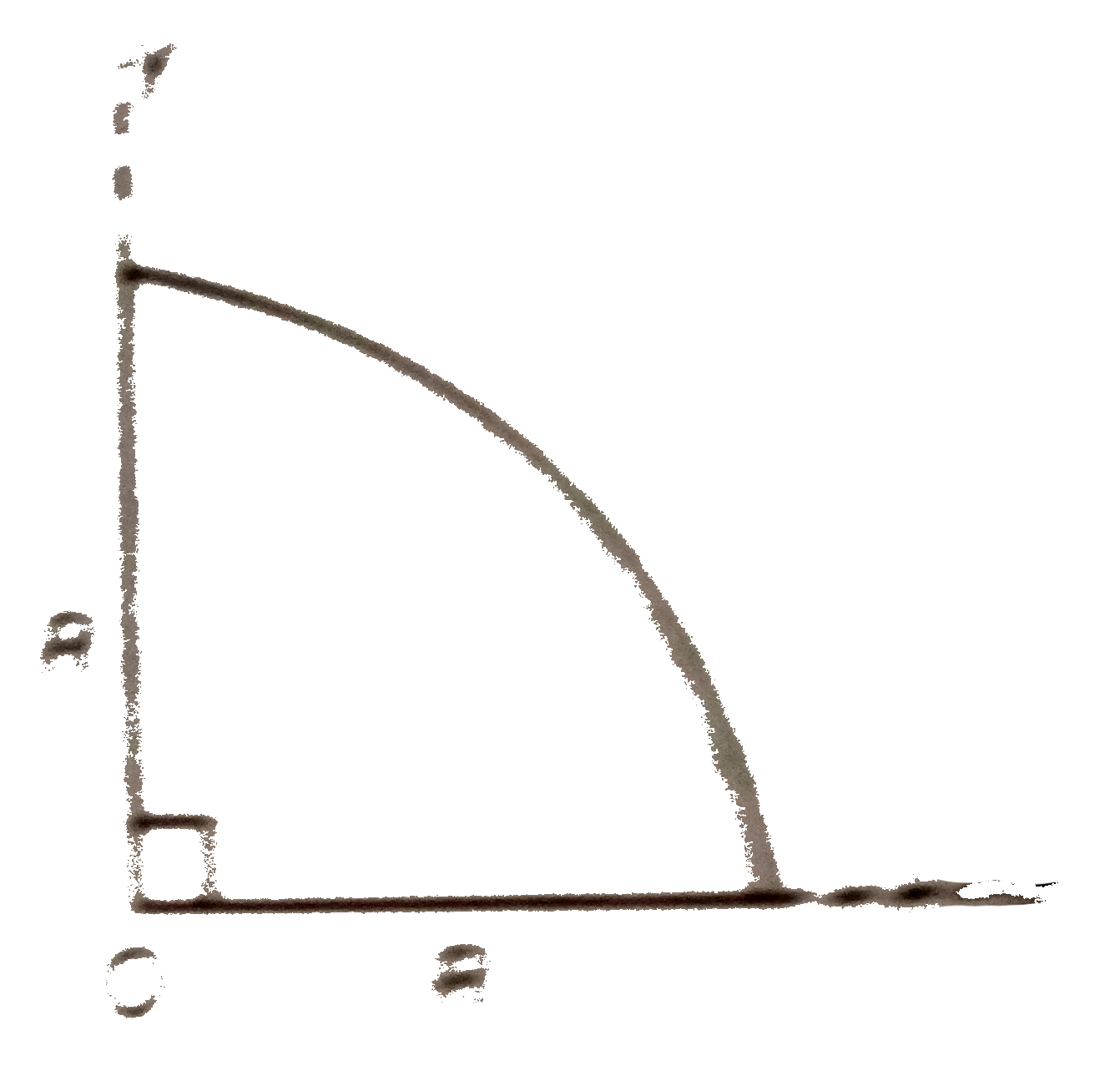Let M and R be the mass and radius of the half - disc mass per unit area unit aera of the half - disc
`m=(M)/((1)/(2)piR^(2))=(2M)/(piR^(2))`

(a) the half -disc can be supposed to be consists of a large number of semicircular rings of mass dm and thickness dr and ranging from r=0 to r=R
Surface area of semicircular ring of radius r and of thickness `dr=(1)/(2)2 pi r xx dr =pi r dr`
`therefore`Mass of this elemetary ring `dm=pirdrxx(2M)/(piR^(2))`
`dm =(2M)/(R^(2))rdr`
If (x,y) are coordinates of centre of mass of this element,
then, `(x,y)=(0,(2r)/(pi))`
therefore , `x=0and y=(2r)/(pi)`
Let `x_(cM)` and `y_(CM)` be the coordinates of the centre of the centre of the semicircular disc.
then `x_(CM)=(1)/(M)int_(0)^(R)xdm =(1)/(M)int_(0)^(R)dm=0`
` y_(CM)=(1)/(M)int_(0)^(R)ydm=(1)/(M)int_(0)^(R)(2l)/(pi)xx((2M)/(R^(2))rdr)`
`=(4)/(piR^(2))int_(0)^(R)r^(2)dr=(4)/(piR^(2))[(r^(3))/(3)]_(0)^(R)`
` =(4)/(piR^(2))xx((R^(3))/(3)-0)=(4R)/(3pi)`
`therefore ` Centre of mass of the semicicular disc `=(9,(4R)/(3pi))`
( b) Centre of mass a unifrom quarter disc,
Mass per unit area of the quarter disc `=(M)/((piR^(2))/(4))=(4M)/(3PiR^(3))`
Using symmetry
for a half along y - axis centre of mass will be at `x=(4R)/(3pi)`
For a half - disc along x-axis centre of mass will be at `x=($R)/(3pi)`
Hence , for the quarter disc centre of mass `=((4R)/(3pi),(3R)/(3pi))`
